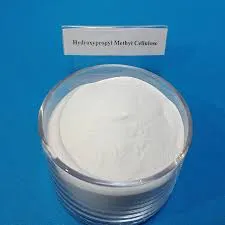
Sep . 28, 2024 22:53 Back to list
High-Performance Tile Adhesive with HPMC for Enhanced Bonding Strength and Flexibility
The Role of HPMC in Tile Adhesives Enhancing Performance and Versatility
Tile adhesives have become indispensable in modern construction, providing a sturdy and lasting bond between tiles and various substrates. Among the myriad of components that contribute to the effectiveness of these adhesives, Hydroxypropyl Methylcellulose (HPMC) stands out as a critical ingredient. This article delves into the importance of HPMC in tile adhesives, exploring its properties, benefits, and applications in enhancing performance and versatility.
Understanding HPMC
Hydroxypropyl Methylcellulose is a non-ionic, cellulose-based polymer derived from natural cellulose. Its modified structure allows HPMC to solubilize in cold water, forming a stable gel or viscous solution. This characteristic is pivotal in various applications, particularly in construction—where it serves as an essential additive in tile adhesives.
Key Properties of HPMC
1. Water Retention One of the most significant attributes of HPMC is its ability to retain water. In tile adhesive formulations, water retention is crucial as it prevents premature drying of the adhesive. This ensures that the adhesive remains workable for a longer period, allowing for better tile placement and adjustment.
2. Thickening Agent HPMC acts as an effective thickening agent, providing the desired viscosity to tile adhesives. This not only helps achieve the right consistency for application but also improves the spreadability, making it easier to apply the adhesive evenly across surfaces.
3. Open Time and Adjustment Time An extended open time is crucial for aligning tiles accurately during installation. HPMC improves open time, allowing users to manipulate the tiles after application without compromising adhesion.
4. Film Formation and Flexibility HPMC contributes to the film-forming capacity of tile adhesives, promoting flexibility once cured. This is particularly important in construction where movements due to temperature changes or settling can affect the integrity of the tile installation.
5. Enhanced Workability The inclusion of HPMC improves the overall workability of tile adhesives. It reduces slippage, allowing for better bond strength between tiles and substrates.
Benefits of Using HPMC in Tile Adhesives
tile adhesive hpmc

1. Improved Adhesion The unique characteristics of HPMC help achieve superior adhesion to various substrates, including cement, gypsum, and other materials. This is essential in diverse applications, from indoor settings to high-moisture environments like bathrooms and kitchens.
2. Adaptability to Different Conditions HPMC-enhanced adhesives perform well under various conditions, making them suitable for both residential and commercial projects. Their resistance to water, heat, and chemicals ensures a longer-lasting bond.
3. Environmental Considerations HPMC is derived from natural cellulose, making it an eco-friendly option in construction. Its use aligns with the growing trend towards sustainable building practices.
4. Compatibility with Additives HPMC can be combined with other additives and polymers to enhance specific properties of tile adhesives. This versatility allows manufacturers to develop specialized products that meet varying performance requirements.
Applications of HPMC-Enhanced Tile Adhesives
HPMC is integral to tile adhesives used in diverse applications, such as residential flooring, wall tiles, and commercial tile installations. Its role is particularly pronounced in
- Ceramic Tiles The balanced properties of HPMC ensure strong adhesion and durability, making it the preferred choice for ceramic tile applications.
- Porcelain Tiles Porcelain is denser and less porous than other tiles, necessitating the use of high-performing adhesives. HPMC helps achieve a robust bond that can withstand the weight and stress associated with porcelain installations.
- Natural Stone With the rise in popularity of natural stone tiles, HPMC facilitates the adhesion required due to the unique surface characteristics of these materials.
In conclusion, Hydroxypropyl Methylcellulose (HPMC) plays a vital role in the formulation of tile adhesives, enhancing performance and versatility across various applications. Its beneficial properties such as water retention, thickening, and improved adhesion make it essential in ensuring that tile installations are not only successful but also durable. As the construction industry continues to evolve, the use of HPMC in tile adhesives will undoubtedly remain central to achieving high standards of quality and reliability.
-
Versatile Hpmc Uses in Different Industries
NewsJun.19,2025
-
Redispersible Powder's Role in Enhancing Durability of Construction Products
NewsJun.19,2025
-
Hydroxyethyl Cellulose Applications Driving Green Industrial Processes
NewsJun.19,2025
-
Exploring Different Redispersible Polymer Powder
NewsJun.19,2025
-
Choosing the Right Mortar Bonding Agent
NewsJun.19,2025
-
Applications and Significance of China Hpmc in Modern Industries
NewsJun.19,2025







